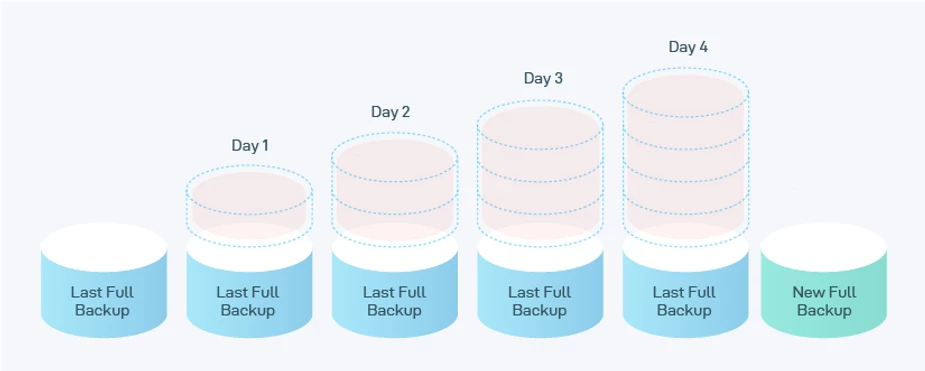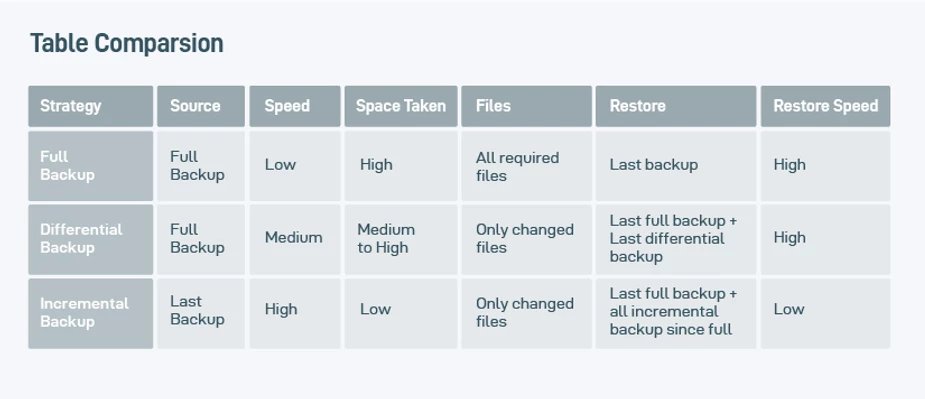The main difference between incremental and differential backups is how they save space and time by storing only changed files. However, the effectiveness of incremental backups is very different from differential backups. Before we dive into the differences between Incremental and Differential backups let’s review Full Backups.
Are you still using Full Backups?
In its simplest form, a full backup is the starting point for both Incremental and Differential backup strategies. A full backup, of course, backs up all the data on a partition or disk by copying all disk sectors with data to the backup image file.
A full backup is time-consuming and requires a lot of space, it’s usually used as part of a backup plan with long intervals, like once a week or a month. During this time, if anything goes wrong, a lot of data can be lost. That’s when these two backup strategies come in hand.
An average partition or disk only contains a small number of changes per day, or even per week. Therefore, it makes sense only to backup data that has changed on a daily basis. This is the basis of smart backup strategies.
Incremental vs Differential Backup – How do they compare?
Differential and incremental backups are different backup strategies with the same purpose: optimize backup time and space. Datto SIRIS ensures reliable backups with our Inverse Chain Technology™ with fundamentally changes the way backup and recovery is done allowing for every incremental snapshot to be a fully constructed recovery point.
What is Differential Backup?
Differential backup strategy backs up files and folders that have changed since the last full backup, on a daily basis. They are much quicker than full backups since less data is being backed up. One of the benefits of this strategy over incremental backup is that you only need the last full backup and last differential backup to restore data, making the restoration process much faster. However, the amount of space consumed by backed up data will grow with each differential backup until the next full backup.
Even though differential backups are more flexible than full backups, they still present too many obstacles for routine use, particularly as the next full backup gets closer.

Diagram Showing How Differential Backups Work
What is Incremental Backup?
Unlike differential backups, incremental backup copies changed files since the last backup of any type, which can be a full backup or an incremental backup. When incremental backups are performed, the shorter the time interval between backups, the less data needs to be backed up. It’s the strategy with the most space efficiency between the three: full, differential, and incremental. In spite of incremental backups giving greater flexibility and granularity (time between backups), they have a reputation for taking longer to restore since they must be constructed from the last full backup and all subsequent incremental backups.
Incremental vs Differential Backup – Comparison Table
Incremental vs Differential Backup – Comparison Table

Smart backup with Inverse Chain Technology
Datto Inverse Chain Technology ensure that you can quickly and reliably backup and recover your data in moments. This is built off this traditional incremental backup, however, Datto uses ZFS to make each incremental point refer to every other point in the chain therefore only one full backup needs to be stored. This increases the backup chains redundancy and the flexibility in how each point is stored and used to virtualise a system in a disaster recovery scenario. Contact us to get started today.
